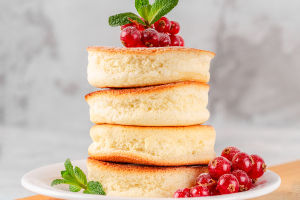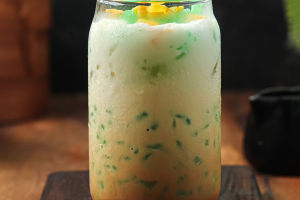Hi, Lykkers! If you have a sweet tooth, you've probably enjoyed macarons. These tiny sandwich cookies made from almond flour, egg whites, and sugar have become a favorite treat for both pastry lovers and casual snackers.
But where did these colorful confections originate, and what makes them so irresistible? Let's explore the delightful world of macarons.
Origins of a Sweet Sensation
While the exact origins of the macaron are hotly debated, many food historians believe they were first baked in Italian monasteries during the Renaissance era. The name comes from the Italian word ammaccàre, meaning "to crush," referring to the method of grinding almonds into a smooth paste.
It wasn't until the 17th century that macarons found their way to France when the wife of Henri II's nephew introduced them to the French court. The Sisters Marguerite were two nuns who sought refuge in France and became famed for baking and selling the treats. Over time, French patissiers elevated the humble macaron to new heights, creating the modern version with its distinctive smooth tops, ruffled circumference, and sandwich cookie design.
Baking Macarons at Home
While mastering the macaron is notoriously challenging for home bakers, their mesmerizing taste and appearance make them worth the effort for many. The keys are precise measurements, properly aged egg whites, and careful control of baking temperature.
To make a basic macaron, you'll need:
- 100g almond flour/meal
- 200g powdered sugar
- 100g egg whites (around 3 eggs), aged at room temperature for a day
- 1/4 tsp cream of tartar (optional)
- 50g granulated sugar
- Food coloring (optional)
- Filling of your choice (buttercream, ganache, jam, etc.)
Instructions:
1. Prep the dry ingredients: Sift the almond flour and powdered sugar into a bowl. This helps remove any lumps.
2. Make the meringue: In a very clean, grease-free bowl, beat the egg whites with the cream of tartar on medium speed until foamy. Gradually add in the granulated sugar and continue beating until stiff, glossy peaks form.
Complete Guide to Making Macarons | Macaron Recipe
Video by Preppy Kitchen
3. Macaronage: Add 1/3 of the meringue to the almond flour mixture and fold gently to combine. Add the remaining meringue and fold in a smearing motion to deflate some air and form a lava-like batter. The batter should flow like molten lava when lifted.
4. Pipe the shells: Line baking sheets with silicone mats or parchment paper. Fit a piping bag with a round tip and pipe 1-inch rounds, spacing them apart. Tap the baking sheets firmly on the counter to release air bubbles.
5. Rest the shells: Allow the piped rounds to rest for 20-30 minutes until they form a skin on top.
6. Bake: Preheat oven to 300°F. Bake one tray at a time for 12-15 minutes, rotating halfway. The macarons are done when they are released easily from the mat.
7. Cool and fill: Allow macarons to cool completely before removing them from the mat. Sandwich two same-sized shells together with your desired filling.
Some tips:
- Wipe down bowls/tools with lemon juice to remove grease.
- Let macarons mature for a day before eating for the best texture.
- Store filled macarons in an airtight container in the fridge
Making perfect macarons takes practice, but following the recipe closely and learning from any mistakes will help you master these delightful French treats! The keys are aging the egg whites, proper folding, and patience.


